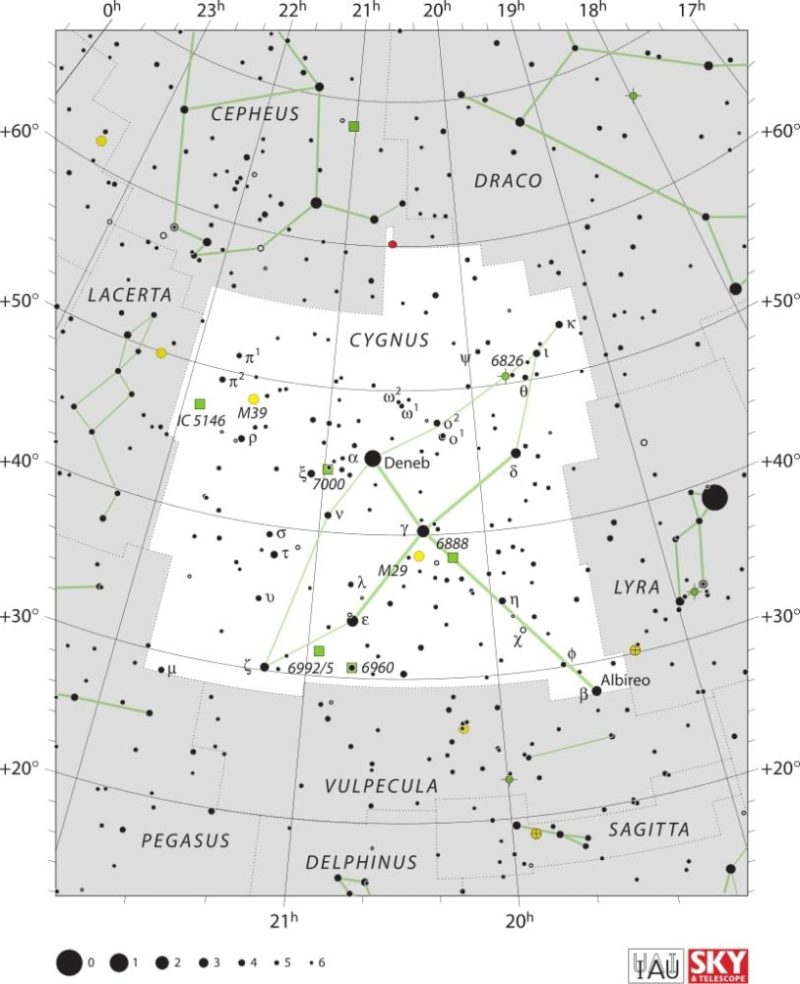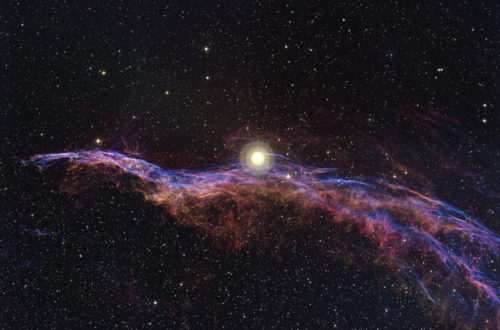Kappa Cygnid Meteor Shower Viewing Guide

The Kappa Cygnids are a small meteor shower that makes its appearance in the sky every year. You can see them throughout most of August, best in the Northern Hemisphere. These meteors originate from the constellation Cygnus, with peak activity typically occurring on August 17th.
Normally the Kappa Cygnids are quite faint and slow moving, with zenithal hourly rates being typically 3 meteors per hour. The best viewing conditions include dark skies away from city lights.
Moonlight and weather can dramatically affect visibility. Want to know what makes the Kappa Cygnid meteor shower special? Want some tips on how to catch them? This article will walk you through what to expect and unveil our top viewing tips.
Unpacking the Kappa Cygnid Meteor Shower
Kappa Cygnids are notable for their relatively slow speed and typically dim meteors. Its radiant is located in the constellation Cygnus. An average Kappa Cygnid meteor isn’t nearly as bright as those from other showers like the Perseids. However, their slow speed means they tend to last longer as streaks in the sky.
Meteoroid Origins and Makeup
These meteoroids are thought to originate from a short-period comet, but the specific parent body is unknown. These meteoroids are generally smaller and more fragile than those from other better-known showers. The debris trail’s composition is what gives the shower its unique profile.
Comparing Speed and Brightness
Their moderate entry speed (about 25 km/s) is slower than the Perseids or Leonids, so Kappa Cygnid meteors appear to move more gently. This slower-than-usual pace allows observers to more easily witness longer-lived trails.
Average brightness is low to moderate, so really dark skies make a huge difference in seeing these well.
How to Spot Kappa Cygnids
Searching for Kappa Cygnids in the night sky is a rewarding pursuit. It takes a unique combination of astronomy expertise, observational patience, and logistical foresight. A subtle meteor shower, the Kappa Cygnids is nevertheless a mesmerizing sight for Northern Hemisphere viewers.
Don’t miss their greatest show in mid-August, when the Kappa Cygnids go into hyperdrive! Though these meteors are indeed slow-moving and faint, being prepared can help ensure that you see as many as possible.
Find the Cygnus Constellation
Finding the Kappa Cygnids begins with spotting the constellation of Cygnus. The radiant point for this shower is located close to Kappa Cygni, a star within the constellation of Cygnus.
The constellation is mostly made up of the Northern Cross asterism, with Deneb at the top. Notable stars like Deneb, Gienah, and Iota Cygni make up the outer edge of the Northern Cross, which can help you find your way around. The radiant, from where most meteors appear to originate, lies near Iota Cygni.
Choose Your Viewing Spot Wisely
Providing clear views can be the most important factor in meteor watching. The best situation is to view them far from urban light pollution, on elevated land. Urban light pollution will wash out the dimmest meteors, so the best chance to see them will be in rural dark sky parks or remote fields.
If you’re close to water, lakeshores can offer expansive, unobstructed views. If a trip isn’t feasible, a local backyard will suffice as long as there are few streetlights and you have an open view of the horizon. As with any event, consider safety and accessibility as a first step.
Recommended viewing spots:
- National or state parks far from cities
- Hilltops or open fields
- Secluded beaches or lakeshores
- Dedicated dark sky preserves
Getting away from the city lights will improve your chances of seeing the fainter meteors. This holds true particularly for the Kappa Cygnids which have a low Zenith Hourly Rate (ZHR) of only 3.
Let Your Eyes Adapt Properly
Eyes require time to acclimatize to dark conditions, known as dark adaptation. It’s true, your eyes need about 20 to 30 minutes to adjust completely. This adjustment is particularly important for catching those elusive, faint meteors.
Unfortunately, looking at bright lights—like phone screens or flashlights—resets this process. Red light flashlights are great because they don’t ruin your night vision. Do your best to avoid screens and minimize all light sources as you prepare and wait.
With a little patience, you’ll see as many stars and probably as many meteors too!
Best Gear for Meteor Watching
Meteor watching doesn’t require fancy gear, but these essentials help you get the most out of your night under the stars. The naked eye remains your best tool to spot Kappa Cygnids since meteors can streak across any area of the sky.
Binoculars can be useful for scanning star fields, but are not very helpful in tracking meteors. Since comfort is the name of the game, be sure to bring a reclining chair or spacious blanket to lie on, warm clothes, and munchies!
Even in August, nights can be quite cool, so it’s nice to have the option to layer up. A bottle of bug spray, a thermos full of coffee, and a star map or planisphere complete the list.
Items to bring:
- Reclining lawn chair or blanket
- Warm clothing and extra layers
- Red light flashlight
- Snacks and drinks
- Bug spray
- Star chart or planisphere
Patience is Your Best Friend
Just like any meteor shower, the Kappa Cygnid meteor shower reward those who wait.
Rates are low, just a few meteors an hour, but a long, patient, quiet wait typically has great rewards. Some evenings are full of quick bursts, and others are more drawn out. Take in your surroundings, identify a few constellations, and appreciate the sounds of the night.
Many seasoned observers recall their most memorable meteor sightings on nights when they least expected them, often after an hour or more of waiting.
Check Local Weather Forecasts
As with any meteor shower, clear, dark skies are key. Cloud cover, fog, and rain will easily obscure the display. Definitely keep an eye on a local weather forecast before going out!
Many astronomy apps pack in cloud cover maps as well. Above all, flexibility is key. Conditions change quickly, and sometimes just moving a dozen kilometers—even in an urban area—can give you a better view of the sky.
Minimize Light Pollution Impact
Bright artificial lights can wash meteors out, preventing us from seeing them. Even the headlights of passing cars or the lights of houses along your route can be painful on your eyes.
Pick an area with little light pollution. Keep porch lights off and only use red lights when you need to walk outside at night. Try not to be oriented towards brightly lit buildings or highways.
Actions to enhance viewing:
- Find the darkest site possible
- Shield eyes from headlights and flashlights
- Cover or turn off all nearby lights
- Face away from cities or light domes
Conclusion
The Kappa Cygnids don’t put on the most high-profile show, but it’s the celestial encore in August that any skywatcher would love to see. Despite their unusually tranquil run, these meteors have puzzled and intrigued professional and amateur astronomers over the years. Dark, moonless nights will provide the greatest chance of viewing them, so consider small towns or campgrounds well removed from urban glow. This month, keep an eye out for the Kappa Cygnids to enjoy one of the most delightful features of a warm-weather sky.
Frequently Asked Questions
What are the Kappa Cygnids?
The Kappa Cygnids get their name from the star Kappa Cygni, located in the constellation Cygnus. The shower is ideally located for viewers in the Northern Hemisphere.
When is the peak of the Kappa Cygnid meteor shower?
Meteor activity is expected to peak around on August 17, so that will be the best night to view the Kappa Cygnid meteor shower.
How many meteors can I expect to see during the Kappa Cygnids?
Under perfect dark-sky conditions, the rate would be only 3 meteors per hour at the peak. Like many meteor showers, certain years are just more active than others.
See also:
- Previous meteor shower: Perseid Meteor Shower
- Next meteor shower: Aurigid Meteor Shower
Would you like to receive similar articles by email?





